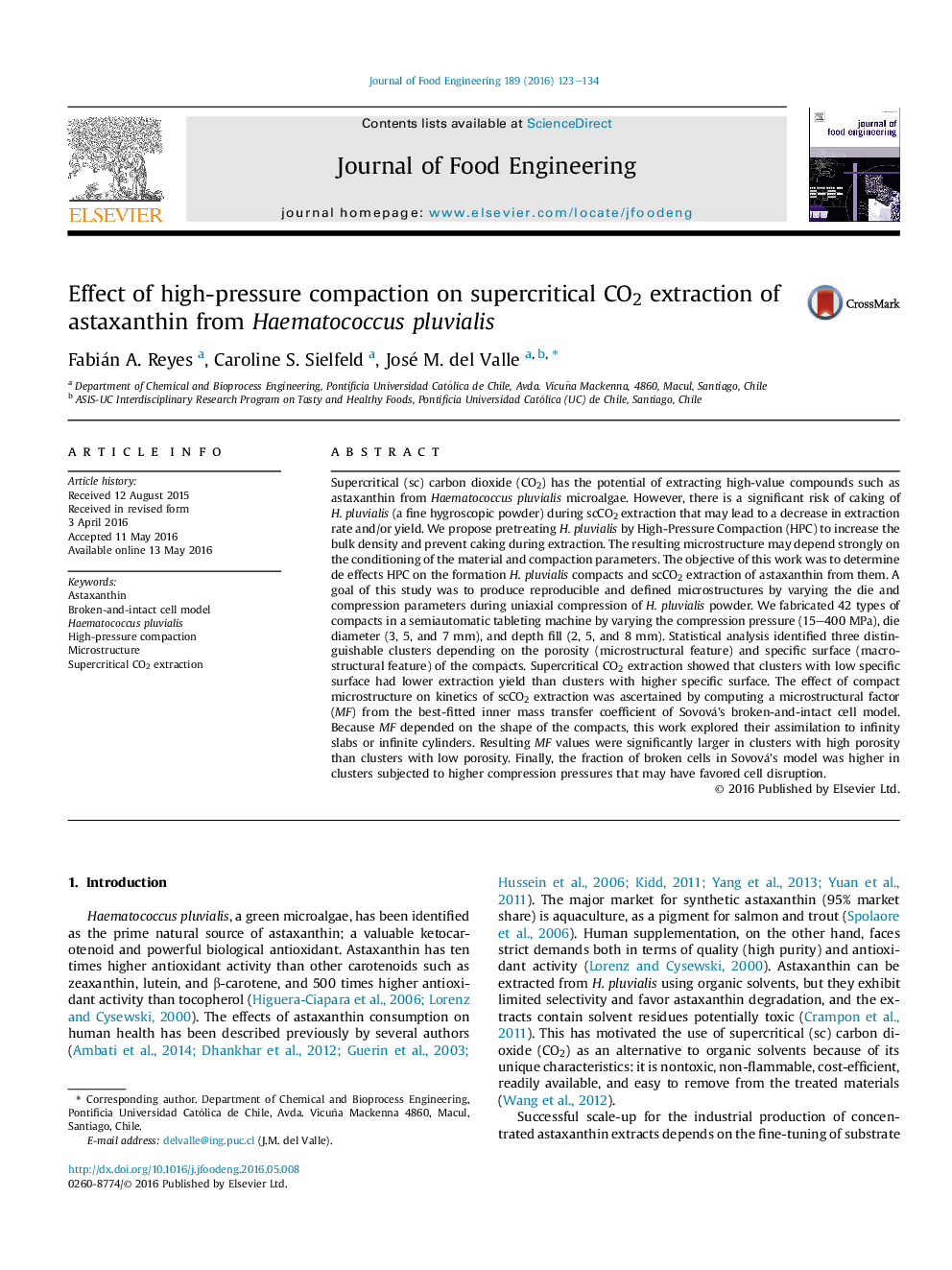| Article ID | Journal | Published Year | Pages | File Type |
|---|---|---|---|---|
| 222596 | Journal of Food Engineering | 2016 | 12 Pages |
•Clustering was an important tool that improved compact’s characterization and modeling.•Compact’s specific surface is a good predictor of extraction yield.•Compact’s porosity correlates statistically well with the microstructural factor.•Sovova’s model fitted experimental data well, with an deviation of 5.75%.•Compression pressure determines the fraction cyst fitted by Sovova’s model.
Supercritical (sc) carbon dioxide (CO2) has the potential of extracting high-value compounds such as astaxanthin from Haematococcus pluvialis microalgae. However, there is a significant risk of caking of H. pluvialis (a fine hygroscopic powder) during scCO2 extraction that may lead to a decrease in extraction rate and/or yield. We propose pretreating H. pluvialis by High-Pressure Compaction (HPC) to increase the bulk density and prevent caking during extraction. The resulting microstructure may depend strongly on the conditioning of the material and compaction parameters. The objective of this work was to determine de effects HPC on the formation H. pluvialis compacts and scCO2 extraction of astaxanthin from them. A goal of this study was to produce reproducible and defined microstructures by varying the die and compression parameters during uniaxial compression of H. pluvialis powder. We fabricated 42 types of compacts in a semiautomatic tableting machine by varying the compression pressure (15–400 MPa), die diameter (3, 5, and 7 mm), and depth fill (2, 5, and 8 mm). Statistical analysis identified three distinguishable clusters depending on the porosity (microstructural feature) and specific surface (macrostructural feature) of the compacts. Supercritical CO2 extraction showed that clusters with low specific surface had lower extraction yield than clusters with higher specific surface. The effect of compact microstructure on kinetics of scCO2 extraction was ascertained by computing a microstructural factor (MF) from the best-fitted inner mass transfer coefficient of Sovová’s broken-and-intact cell model. Because MF depended on the shape of the compacts, this work explored their assimilation to infinity slabs or infinite cylinders. Resulting MF values were significantly larger in clusters with high porosity than clusters with low porosity. Finally, the fraction of broken cells in Sovová’s model was higher in clusters subjected to higher compression pressures that may have favored cell disruption.
